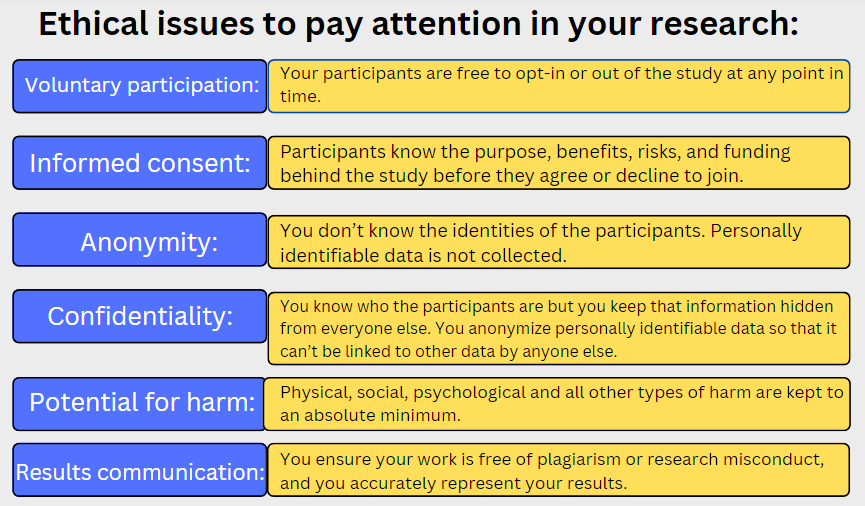How to Write a Dissertation Proposal
A dissertation proposal is a must-have document for graduate students to craft before writing their final paper on a Master’s or Ph.D. course. It’s a detailed plan of your work to convince the academic committee that your research is worth consideration.
Think of it like a marriage proposal:
You persuade your love that it’s a good idea to say “yes” to you. So, your proposal dissertation should be well-planned and attractive enough to engage professors so they will answer, “Yes, let’s go for it,” for your dissertation writing.
In this post, you’ll learn how to write dissertation proposals, with the elements to include and a couple of examples to understand the concept better.
If still in doubt, you are welcome to ask our specialists for professional help with dissertation writing.

What is a Dissertation Proposal?
First, let’s agree on the dissertation definition:
- A dissertation is a long-form academic paper on a particular subject a student writes for a university degree or diploma. Its purpose is to test research skills a student got in university and thus determine their final grade for the course.
When students start their dissertation writing process, one of the first requirements is to provide a dissertation proposal for their academic advisor or committee’s approval.
This document is like the table of contents for your future dissertation:
A proposal explains what you want to research in your paper, why, and how you will do that (research methods you’ll use). It’s aimed at justifying and planning your research project, showing how it will contribute to existing research on the topic, and demonstrating to the committee that you understand how to conduct it within a given time frame.
How to write a proposal?
Given it’s a detailed and well-researched document, please abandon hope, all ye who want to accomplish the task in a couple of hours. 🙂 Below is your instruction, with all the critical elements your dissertation proposal should have to get approved.
How to Write a Dissertation Proposal
Here’s how to write a proposal for a dissertation:
Craft a title
Writing a dissertation proposal starts with a title. You can craft the exact wording for it later, but your first stage will be to choose a topic and convey the idea of your investigation.
How to decide on the dissertation topic:
One of the easiest ways is to go back to all lectures, notes, and assignments you completed throughout the course and see if there’s something of your interest with the potential for further research. Consider topics that lack scholarship in that particular area and those potentially interesting for the academic community. Does yours have any scientific significance and practical application?
When crafting a working title for your dissertation, avoid those vague and long. A good title tells readers about the topic you will research and the type of study you will conduct.
Examples:
- Economic growth and environmental problems in international business
- Influence of the family’s emotional climate on the formation of markers of deviant behavior in early adolescence
- The anti-Hitler coalition formation in 1941-1945
- Contemporary art of 2019-2021 as a factor in the transformation of sociocultural reality
- Threats to EU security amid confrontation between the US and Russia
Provide an abstract
A proposal abstract is like a summary of your dissertation for academic advisors to see what you’ll have there. Please note that not all fields require abstracts, so ask your advisor if you need to include one.
Here’s an example of how dissertation proposal abstracts may look:

In general, abstracts are brief (100-350 words, some are even briefer — no more than 50 words). They should summarize the following info about your research:
- Problem statement
- Background of your study
- Research questions or hypotheses you’ll cover
- Research methods and procedures you’ll use
Write an introduction
Here you’ll need to expand on your title and write a few paragraphs about the details of your topic. What will you research, and why is it worth researching?
State your central question here and provide a background on your subject: Overview the broad area (introduce the key concepts) and explain the narrower area that will be your focus. Outline what you intend to investigate to provide a sense of your overall research interest.
Focus on the topic here, and do not discuss your research methods or references. You’ll write about them later in the proposal.
State a problem
Consider it a kind of thesis statement for your dissertation. You can incorporate it in the introduction, or it may stand as a separate section in your proposal (everything depends on the field and your academic advisor’s requirements). Some proposals start with a thesis statement and have no introduction at all.
Anyway:
Regardless of its placement in the dissertation proposal, your thesis should:
- State the problem (clearly!)
- Answer the question, “What’s the gap your research will fill?”
- Limit the variables you address.
That’s what your thesis statement may look like in the proposal’s introduction:

Explain your aims and objectives
Your dissertation proposal defense will include this element, so do your best to highlight the issues you’ll explore and the questions you’ll be looking to answer in your final paper.
As well as a thesis statement, aims and objectives may come in the introduction or as a separate section of your proposal. It’s critical to specify the focus and core concepts of your research here.
What to write in your dissertation proposal’s Aims and Objectives section:
- The goals of your study: What do you want to find?
- Your study’s rationale: Why should the academic world study this?
- The original contributions of your study: What makes it different from previous research? What will you add to the field?
This section may also include your hypotheses (if any), limitations of the research, and a subjection defining some terms the audience might be unfamiliar with.
Outline your research methods
And here comes the Methodology section of your dissertation proposal. This element outlines the research methods you’ll use to collect and process the data for your research. You should specify the sources you aim to use, the data you’ll collect (qualitative or quantitative), and the ways you’ll use to analyze it.
Do your best to explain the reasons you’ve decided on those methods: Why are they more appropriate than others? Mention all — lab experiments, surveys, interviews, observation, etc. — and remember to reveal the number of participants you will involve.
Also, outline the variables you’ll measure, the specific tools (if any) you’ll use for selected methodologies, and how you will choose data to ensure valid results.
Provide the literature review
The literature review section is about the list of books and other materials you’ll use for research. It stands to reason you won’t read all of them at the stage of writing a dissertation proposal, but you should still identify the key texts you’ll refer to when working on the dissertation itself.
The list will demonstrate how your research connects to previous studies and how your methods differ from those already done. Please include the resources with theoretical and empirical approaches to your topic; also, mention what value that particular literature brings to your work.
When writing the literature review for your proposal, ensure each text you decide to include there serves the following functions:
- Reveals the current study within your chosen discipline
- Illustrates the uniqueness and need for your project, demonstrating how your approach differs from those of other scholars
- Justifies your research methods
- Demonstrates your understanding of the topic and approaches to studying it
Writing a literature review will help you see how others covered your topic, what theories they used to analyze materials, and the most appropriate methodologies you can use now for your research.
Include the constraints and limitations
A proposal dissertation also needs to contain the constraints (if any) of your research:
It’s critical to display your understanding of the broad links to more complex issues related to your topic and specify the role they play in why you decided to focus your work on just a part of the subject.
Also, ensure you recognize the possible limitations you can face when exploring and presenting your findings. Mention them in your dissertation proposal. For example, it can be a lack of prior research on your topic, issues with sample size, time constraints, and any other factors that may influence your study.
Mention ethical considerations
If your research methodology includes working with participants, you need to discuss any ethical concerns in your dissertation proposal. Have you secured their permission to be included in your work? Have you informed the participants about how you’ll use their data? Will their personal information remain confidential?
Ethics matter for human rights, scientific integrity, and collaboration between science and society. If you plan to collect research data from people, you need to outline how you’ll deal with each ethical issue in your dissertation proposal.
Issues you may face:
- Voluntary participation
- Informed consent
- Anonymity
- Confidentiality
- Potential for harm
- Results communication

Write a mini-conclusion and a reference list
A conclusion is not a must-have but still a good practice in dissertation proposals: Sum up your document to remind the committee why you choose that particular topic, what outcomes you expect, and what research type you’ll use in your dissertation.
End your proposal with a bibliography with texts and other sources you referred to in it. Also, you can include appendices (if you already have any) like diagrams or any permissions required in your field of study.
Dissertation Proposal Example
Once you come online and start looking for a dissertation proposal example, tons of documents are available, like these two from Maria Lane and Dimitri Nakassis. Please note they are here to use as a template for dissertation proposal, not a version to copy-paste and use as your own.
All the examples are for informative and educational purposes only. Please don’t use any of them as your proposal: They are samples for you to understand the structure of dissertation proposals and craft yours as an original and well-researched document that will convince academic advisors to approve your work for writing.
So, Here’s a Recap:
A dissertation proposal is a must-write document for those planning to craft a thesis or a dissertation to complete a course and get their final grade on a Master’s or Ph.D. It’s like the table of contents to submit to an academic advisor or committee so they would approve your future work.
This paper explains what, why, and how you plan to research in your dissertation. It’s a detailed and well-researched document aimed at justifying your final project. To get approved, it needs to include the following elements:
- A working title
- An introduction with your thesis statement, aims, and objectives
- A methodology you’ll use
- A review of the literature you’ll refer to during the research
- Constraints, limitations, and ethical considerations (if any)
If you have questions or need help with a dissertation proposal, you can always ask CopyCrafter’s academic writers to assist you.